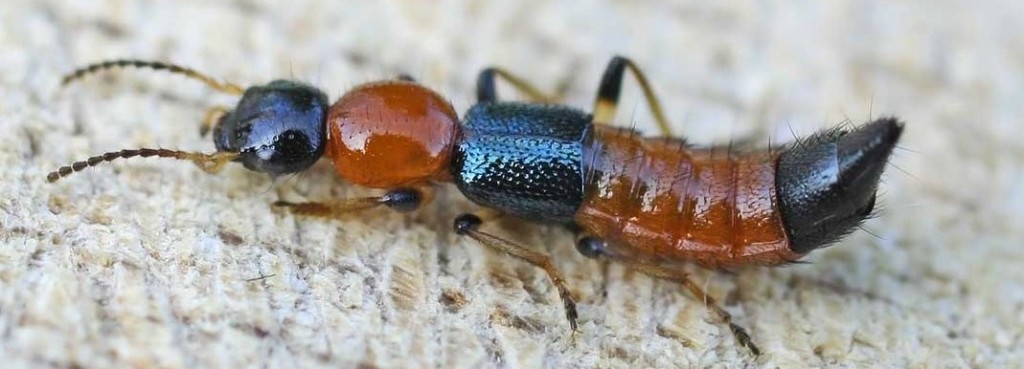
Rove beetles belong to the family Staphylinidae, one of the largest family of beetles, with over sixty thousand species worldwide and over three thousand species in North America. Since there are so many species there is great variation in characteristics but all have short wing covers so that half of their abdomen is visible. They have well developed hind wings, however, so can fly well. Their bodies are slender, flexible, brown or black in color, and range in length from .o4” to 1.4’ with most being between .o8” and .3”. When threatened many species raise their abdomen upward like a scorpion but unlike a scorpion they have no stinger. A few, however, release a substance that can irritate the skin. Their mouth parts are adapted for chewing.
The diet of most adult and larval rove beetles consists primarily of insects that feed in decaying organic matter such as plant debris, manure, compost piles, and decaying animals. Depending on the species, the pests they commonly consume include ants, aphids, bark beetles, small caterpillars, mites, root maggots, slugs, snails, termites and other ground dwelling pests. The diet of some rove beetles includes fungal spores, algae, or pollen but only one species is known to feed on living tissue of higher plants.
Rove beetles undergo complete metamorphosis. The females lay spherical white eggs in small clutches near a food source for the larvae such as decaying plant litter. The larvae are active predators in the soil or at ground level and form pupae there. Rove beetles can overwinter as adults, larvae, or pupae.
Rove beetle populations can be maintained by providing cover and food. Cultural practices that include mulches for conserving soil moisture provide the habitat needed by rove beetles in order to complete their life cycle. They also provide an environment that attracts the fauna that is the diet of the rove flies. Avoidance of broad spectrum insecticides is necessary to protect populations.